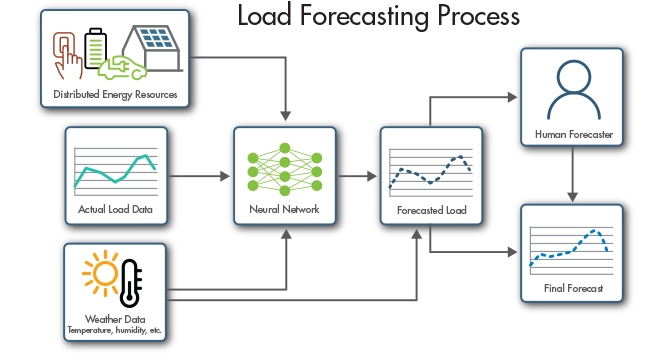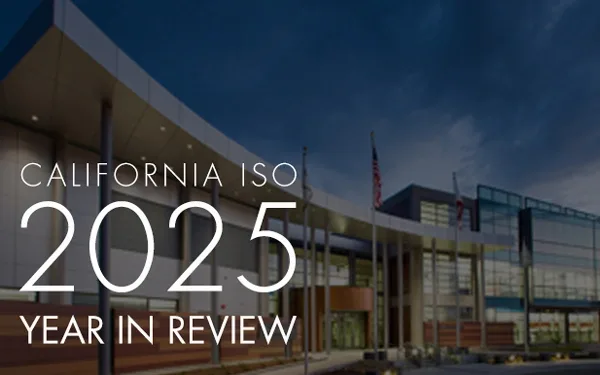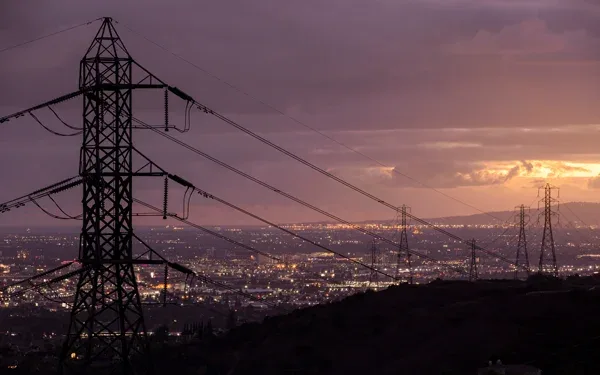Reliability and the growing importance of forecasting

When we say forecasting is an important part of our work at the California Independent System Operator, that is just one small part of a big story.
Over the six years I have been with the ISO, I have seen the increasing importance of Short Term Forecasting. Our team now includes statisticians, mathematicians, economists, data scientists, electrical engineers, and meteorologists, each of whom has a unique and specialized background.
As California has accelerated its transition to a carbon-free grid, more of the generation being added to the system is weather dependent. And that rapid growth of renewables onto the grid has required growing the capabilities and responsibilities of the forecasting team.
Driven by the changing resource mix, the forecasting team’s responsibilities now include performing demand, renewable, and weather forecasting services for members of the ISO’s Western Energy Imbalance Market, (WEIM).
When the real-time electricity market started in 2014, it had two members – the ISO and PacifiCorp. Today, the WEIM has 19 participants serving 77% of electricity demand in the Western United States. In 2023, the WEIM will have 22 participants serving nearly 80% of demand in the West.
As part of that growth, our team has expanded from providing demand forecasting services from 10 geographical areas in California and the West to 32 separate areas today.
To give you a snapshot of a day in the life of a forecasting team member, here is a partial list of the team’s tasks:
- Weather forecasting and alerting
- Behind-the-meter solar forecasting
- Demand forecasting
- Renewable forecasting
- Uncertainty requirements formulation and forecasting
- Registering and onboarding all renewable resources
- An annual Flexible Resources Adequacy Study
Keep in mind, we perform many of these tasks constantly, with the ultimate goal of being as accurate as possible so our grid operators and WEIM members always know what conditions they’re dealing with in keeping a balance between supply and demand.
These complex, precision-intensive jobs serve as a foundation for the real-time decisions being made by the market and grid operators working at ISO headquarters in Folsom, as well as by energy providers across the West.
As more weather-dependent resources enter the system, the complexity and reliance on the weather forecast as well as probabilistic forecasting methodologies has also grown.
Demand forecasting is a great example of the change in complexity. Years ago, the key variable to assist in creating a demand forecast was primarily temperature. Currently, due to the changing demand with greater amounts of distributed energy resources (DERs) such as rooftop solar, the interaction between all the weather-dependent resources brings into play additional variables such as, cloud cover and wind. Energy storage patterns and electrical vehicle charging must also be taken into consideration.

Like any organization or division within the ISO, people are the key to our success. We have an outstanding forecasting team and I am most proud of the talented colleagues I get to work with on a daily basis. I am especially proud of the diverse backgrounds, skills, and experience members of the team bring to the job.
I believe whole-heartedly that if you’re required to solve new and complex problems, different skills, experience, and perspectives often lead to the best solution.
Our diversity has been incredibly helpful in developing the summer alert process and action steps when conditions are going to be stressed. It has helped forecasting navigate development of the requirements for onboarding new resource types, such as hybrid and co-located resources. It has also helped forecasting come up with innovative ways to model demand to assist with the increase of DERs.
As a manager, the team dynamic and its make-up is one of the things I am most passionate about. We look at the skill sets we don’t have and think about how we can bring in people with different expertise that can help us meet new challenges and opportunities.
I am also incredibly proud of our teamwork and how my colleagues are all open-minded and willing to consider different approaches, which pushes us toward better solutions. It reminds me of one of my favorite quotes, and it’s really applicable to the work we do: “When we make it safe to fail, we make it safe to succeed.”
With our team’s long list of responsibilities and the busy, fast-paced nature of our work, our greatest challenge may be how we maintain an efficient, robust flow in our various processes.

For example, the meteorologists have 10 sources of temperature forecasting. Their job is to look at them, analyze all that data, factor in all the variables and use their expertise and knowledge of past performances to develop their own forecast.
It is important for our meteorologists to use automation where possible to make these decisions and identify patterns, but then lean into the areas that still need a human brain to assist. Numerical Weather Prediction Models, for instance, continue to improve and become more granular, but it is critical to ensure you are able to use the automation when available and save human brain power for critical areas where the model is not capturing the forecast appropriately.
Meteorology is something I became interested in as a young girl growing up in Wisconsin. My dad was a cross-country trucker and weather was a big concern for him. He used to take me up on a hill in our town and watch the storms come in, even the big ones. I fell in love with weather and wanted to learn everything I could.
It’s a privilege to work at the ISO and do what I love with a talented team. The work is challenging but always interesting and gratifying. If you want to learn more about it and the role forecasting plays in helping to keep the grid balanced, this video provides a good overview.


